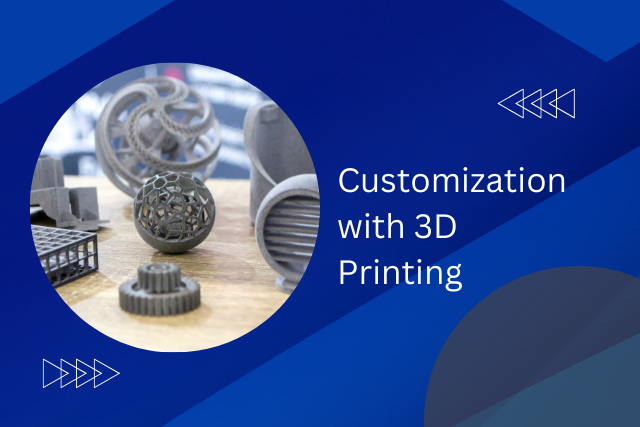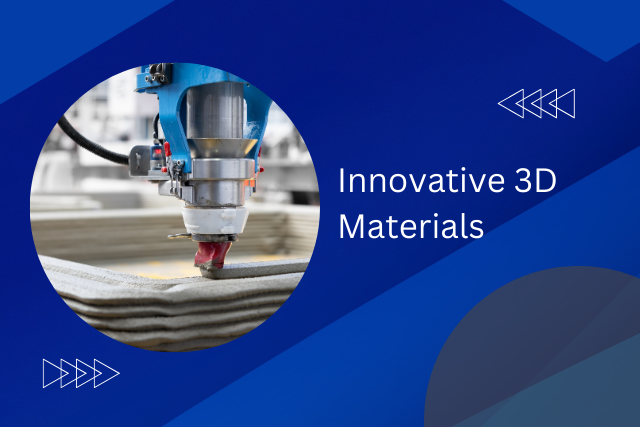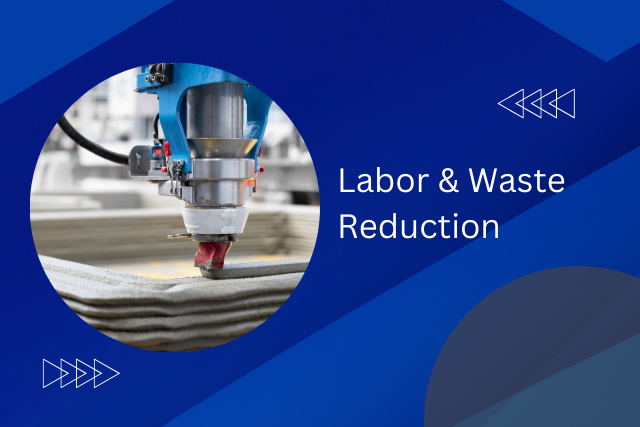The success of 3D printing, a key part of making and designing things today, is closely linked to the weather and climate around the world. Extreme temperatures can cause printed items to warp or change shape, while humidity can affect the materials used for printing, and wind can mess up printing if done outside.
It’s very important to look into how these weather conditions can change the way 3D printing works. By understanding how weather and seasons can change in different places, we can get better at predicting how materials will act. This focus on tackling weather challenges can make 3D printing more reliable and suitable for use everywhere in the world.
Impact of Extreme Temperatures
Extreme temperatures, both very hot or very cold, can cause problems for 3D printing. In very hot places, parts of the 3D printer can overheat. This makes the printer work poorly and can mess up the printed items by cooling them too fast. This often leads to twisted or out-of-shape objects that don’t match what they’re supposed to look like.
On the other hand, in very cold places, the material that comes out of the printer cools down too quickly. This can make the layers of the print not stick together well, creating weak spots that can easily crack or break. Different materials used in printing expand and contract with temperature changes at different rates, which can add internal stresses and make the final product less reliable.
To deal with these issues, it’s important for users to keep the printing area at the best temperature. This might mean using air conditioners or heaters, depending on where you are and the weather. Also, choosing materials that handle extreme temperatures better can help maintain the quality of the prints. In short, knowing how to manage the effects of extreme temperatures is crucial for making good quality 3D printed items in any climate.
Humidity’s Role in Printing
Humidity, or the amount of water vapor in the air, plays a big role in how well 3D printed objects turn out. If there’s too much moisture, it can cause a lot of problems both during the printing and with the final product. Materials like nylon, PVA, and PLA that make up the filament (the material used for printing) can soak up water.
This makes them swell up, which can block the nozzle of the printer and make the printing uneven. Also, water in the material can turn into steam while printing, creating small holes and making the object weaker.
To avoid these problems, it’s important to keep the air around the printer dry. Using dehumidifiers in the places where you store your materials and do your printing can help keep the humidity at the right level. This makes sure the filament stays dry and prints well.
Also, keeping filament in airtight containers with desiccants (materials that absorb moisture) can stop it from getting wet. These steps make the printing better and allow for creating high-quality 3D prints in different places, no matter the weather.
Wind Influence on Outdoor Printing
When printing 3D objects outside, wind can cause a lot of problems. It can make the printed materials cool down too fast. This can result in parts not sticking together well, the print bending out of shape, or even the print coming off the print bed. These issues can mess up both how strong the print is and how it looks.
To deal with the wind, people might use windbreaks or print in places where the wind can’t reach as much. But sometimes, you can’t avoid the wind. When that happens, you need to change the print settings. Slowing down the print speed, making the printer hotter, and changing how thick each layer is can help fight against the wind’s cooling effect. These changes might make printing take longer and use more material.
To print outside successfully, you need to really understand how the wind affects your print and be ready to try different settings to see what works best. This approach makes sure you can still print outside, showing how important it is to think about the environment when printing.
Seasonal Changes and Material Behavior
As we transition to examining the impact of seasonal changes on 3D printing, it is critical to understand how temperature fluctuations can significantly alter filament properties, affecting overall print fidelity.
Moreover, the interplay between humidity levels and print quality cannot be overstated, necessitating the implementation of adaptive storage solutions to mitigate these effects. This section aims to provide a comprehensive overview of these challenges and propose practical measures to ensure consistent print quality throughout the year.
Temperature’s Effect on Filament
Changes in temperature, especially with the different seasons, really affect how 3D printing filaments work. When the temperature changes, the filament can become more bendy, more likely to break, or even change color.
For example, PLA (Polylactic Acid) can get very brittle and easy to break in cold weather, which makes it hard to print with and can cause problems during printing. On the other hand, high temperatures can make filaments like ABS (Acrylonitrile Butadiene Styrene) too soft or cause them to change shape before they are used in the printer, which can ruin the final printed item.
This means it’s really important to store and use these materials in the right way, knowing how they react to heat or cold. If you do this, you can make sure your printing works well no matter the season, without any issues.
Humidity and Print Quality
Understanding how temperature affects filament behavior helps us see how important humidity is for 3D print quality. This is true for different times of the year and types of materials. humidity can change how printing materials act, which affects the final product.
For example, if filaments like PLA or Nylon take in too much moisture, it can cause problems like bubbling, layers not sticking together well, and the print not being as strong.
On the other hand, if humidity is kept just right, it can make sure the filament stays consistent, leading to better print quality.
Changes in the seasons can make the moisture in the air go up or down, which means we need to be smart about how we keep and handle materials to keep printing well.
This smart way of dealing with materials means we can always make high-quality 3D prints, no matter the weather challenge.
Seasonal Storage Solutions
To deal with the problem of seasonal moisture changes hurting 3D printing materials, it’s very important to have good storage plans. Materials such as polylactic acid (PLA) and acrylonitrile butadiene styrene (ABS) take in moisture from the air, which makes them less suitable for printing. This can cause printing to fail and waste materials.
A smart way to solve this issue is by using storage containers with desiccants. Desiccants help remove moisture and keep the filament in good condition no matter the humidity outside. Using vacuum-sealing methods also helps by keeping air away from sensitive materials and making them last longer.
Putting digital humidity monitors in storage places gives you exact moisture levels, so you can keep the storage conditions just right. These methods help you keep materials in the best shape, making sure of good print quality all through the year and allowing you to work well in any weather.
Geographic Variability in 3D Printing
The area you live in can really change how well 3D printing works. Things like the weather, humidity, and air quality in your place can make a big difference in the materials you use for printing and how reliable your 3D printer is.
For example, if your area is very humid, it can ruin the filament materials like PLA and ABS, making the things you print less strong. But if it’s really dry, you might have problems with static electricity that can mess up your equipment.
Also, if the temperature goes up and down a lot, it can change how quickly your printed object cools down. This can make your prints less accurate in size and the layers might not stick together well. In places with really hot or cold weather, you need to use more energy to keep your printing environment just right, which can cost more money.
It’s important to know about these differences in geography when you’re doing 3D printing. People who make things with 3D printers, whether they are doing it for fun or for work, should think about the environment where they are printing. They need to choose the right materials and set their printers correctly based on their local weather.
This approach supports a sustainable and flexible way of 3D printing that allows for creativity everywhere, no matter where you are.
Adapting to Environmental Challenges
Adapting to environmental challenges in 3D printing necessitates a nuanced understanding of how temperature fluctuations and humidity levels can significantly impact print quality and material integrity. Strategies to mitigate weather-related obstacles are critical for maintaining operational efficiency and ensuring the durability of printed objects.
By examining the role of temperature effects and humidity, we can develop targeted approaches to optimize 3D printing processes under varying climatic conditions.
Temperature Effects on Printing
Understanding how temperature affects 3D printing is very important. It changes how materials work, the quality of the print, and how well the printing process runs. Different materials need different temperature settings.
For example, thermoplastics need the right temperature to stick together well and be strong. But, if it’s too hot, it can cause the print to bend or warp, which ruins how it looks and works. To deal with temperature issues, printers need good ways to control heat.
This can mean using heated build chambers to keep the temperature steady, or using smart software to change printing settings as needed. By doing these things, it’s possible to make high-quality prints in all kinds of weather, making 3D printing useful all around the world.
Humidity’s Role in Quality
Temperature is very important for 3D printing, but so is humidity. If the air is too wet, it can make the printing materials, like PLA or ABS, absorb moisture. This can cause problems like layers not sticking together well, the print warping, or the nozzle getting blocked. These issues can make the printed item look bad and not as strong. On the other hand, if the air is too dry, it might cause static electricity which can mess up the printing.
Mitigating Weather-Related Challenges
After finding out how much the wetness in the air affects the results of 3D printing, it’s really important to look into ways to deal with these weather problems to make sure we get the best printing results.
A practical step is to use dehumidifiers in the areas where we do our printing. This helps keep the wetness in the air at a good level, which means the materials we use to print won’t get ruined, and the quality of our prints stays high. Using climate control systems is another good move because they can help control not just the wetness in the air but also how hot or cold it gets, which can also mess with the printing.
Thanks to new discoveries in making materials, we now have filaments that can handle changes in the weather better, offering another way to keep our prints looking good no matter the weather. By putting these steps into action, we can really improve how well 3D printing works in all sorts of different weather.
Conclusion
In summary, the success of 3D printing technology is greatly affected by the weather and where you are in the world. Things like very hot or cold temperatures, humidity, wind, changes in the seasons, and different places on the Earth can change how well 3D printed items turn out. They can make the quality and dependability of these items worse.
So, it’s really important for people involved in 3D printing to find ways to deal with these weather and place-related challenges. Doing this will help 3D printing grow and be used more all over the world, no matter the climate or location.






